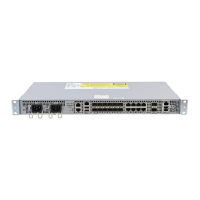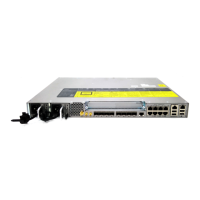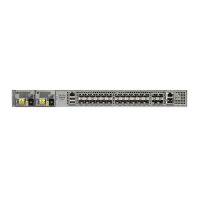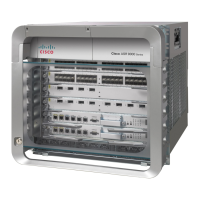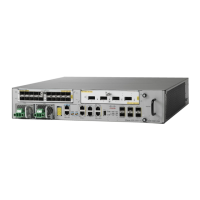Configuring CFM over EFP Interface with Cross Connect—Port-Based Cross
Connect Tunnel
SUMMARY STEPS
1.
enable
2.
configure terminal
3.
interface gigabitethernet slot/subslot/port
4.
service instance id Ethernet [service-name]
5.
encapsulation dot1q {any | vlan-id [vlan-id[-vlan-id]]} second-dot1q {any |vlan-id[vlan-id[-vlan-id]]}
6.
xconnect peer-ip-address vc-id {encapsulation {l2tpv3 [manual] | mpls [manual]} | pw-class
pw-class-name}[pw-class pw-class-name] [sequencing {transmit | receive | both}]
7.
cfm mep domain domain-name [up | down] mpid mpid-value [cos cos-value]
DETAILED STEPS
PurposeCommand or Action
Enables privileged EXEC mode.enable
Step 1
Example:
Router> enable
•
Enter your password if prompted.
Enters global configuration mode.configure terminal
Example:
Router# configure terminal
Step 2
Specifies the Gigabit Ethernet interface to configure,
where:
interface gigabitethernet slot/subslot/port
Example:
Router(config)# interface Gi2/0/2
Step 3
slot/subslot/port—Specifies the location of the interface.
Creates a service instance (an instantiation of an EVC)
on an interface and sets the device into the config-if-srv
submode.
service instance id Ethernet [service-name]
Example:
Router(config-if)# service instance 101 ethernet
Step 4
Configures the encapsulation. Defines the matching
criteria that maps the ingress dot1q, QinQ, or untagged
encapsulation dot1q {any | vlan-id [vlan-id[-vlan-id]]}
second-dot1q {any |vlan-id[vlan-id[-vlan-id]]}
Step 5
frames on an interface for the appropriate service
instance.
Example:
Router(config-if-srv)# encapsulation dot1q 10-20,
30, 50-60
Carrier Ethernet Configuration Guide (Cisco ASR 920 Series)
223
CFM Configuration over EFP Interface with Cross Connect Feature
Configuring CFM over EFP Interface with Cross Connect—Port-Based Cross Connect Tunnel
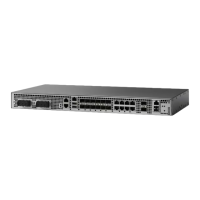
